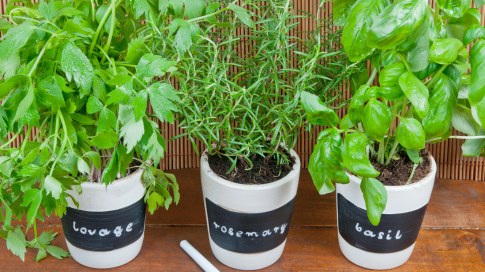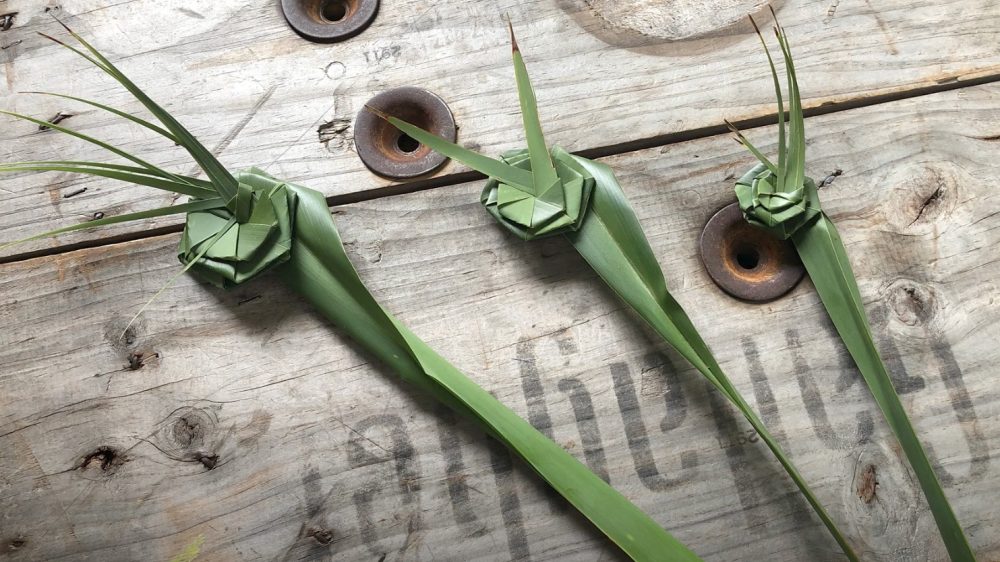
How To Weave A Putiputi (Flower) using Harakeke (flax)
Posted:
Weaving putiputi, or flax flowers, is a beautiful first weaving project for kids and adults alike. A great zero-waste, nature-based craft activity, putiputi can be woven as koha, gifts or decorations for your home or classroom. They’re perfect for a waste-free or plastic-free celebration.
In this blog post and video, Pamela Gill (Ngāti Porou, Te Aitanga-a-Hauiti) introduces the tikanga, tools and steps for making your very first woven flower.
What you need
- A sharp knife for harvesting your harakeke rau (leaf)
- Harakeke plant
Tikanga for harvesting harakeke
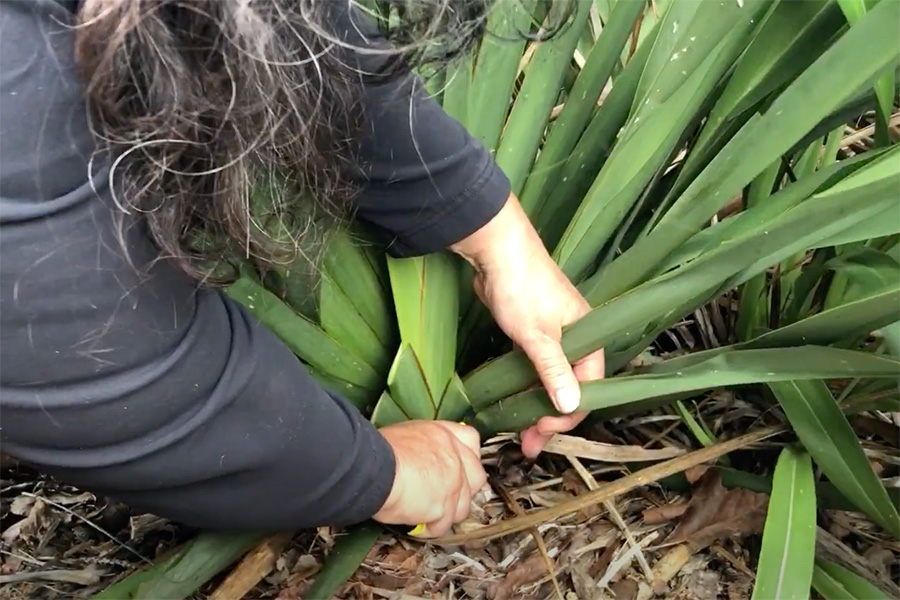
Harakeke is a native plant in Aotearoa New Zealand that can be found in many parks, reserves and gardens. It can often be found close to awa and wetlands. It is a culturally significant plant for Māori, and it’s important to follow tikanga (correct protocol) when harvesting harakeke.
- Only harvest enough harakeke for what’s needed to avoid waste.
- Don’t harvest at night, in the rain, or when you have your wahine mate (period).
- A karakia must be said before cutting the flax. This focuses your mind, and acknowledges the harakeke as the taonga that it is.
- To protect future generations of growth, do not harvest the rito (child) or awhi rito (parents). When harvesting, cut close to the stem on a downward angle, away from the awhi rito, toward the exterior of the harakeke whānau (see this diagram of a Harakeke plant on Te Ara for more).
- All unused flax must be returned to Papatūānuku (nature), and not put into your household rubbish.
- Don’t step over weaving materials, or your harakeke.
- It is tradition to give your first weaving item away.
Karakia mō te harakeke
Here is a karakia you can say before harvesting harakeke.
Te harakeke, te kōrari
Ngā taonga whakarere iho
o te rangi, o te whenua,
o ngā tīpua.
Homai he oranga mō mātou.
Tihei mauri ora.
English translation:
The flax, the flax flower
The treasures passed down to us
from the sky, the land,
and the ancestors.
Give health for us all.
Behold the breath of life.
Weaving the putiputi
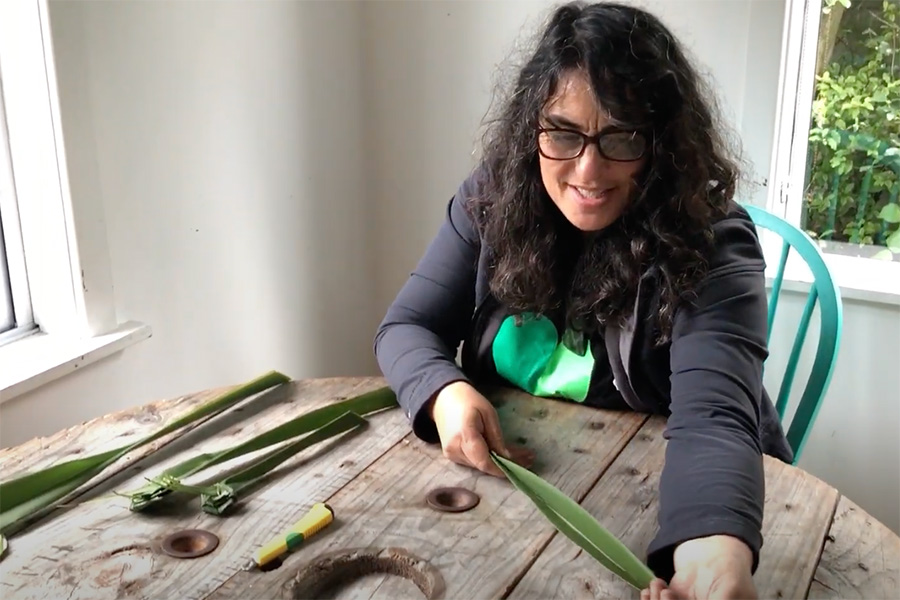
1. Fold the rau (leaf) lengthwise down the middle.
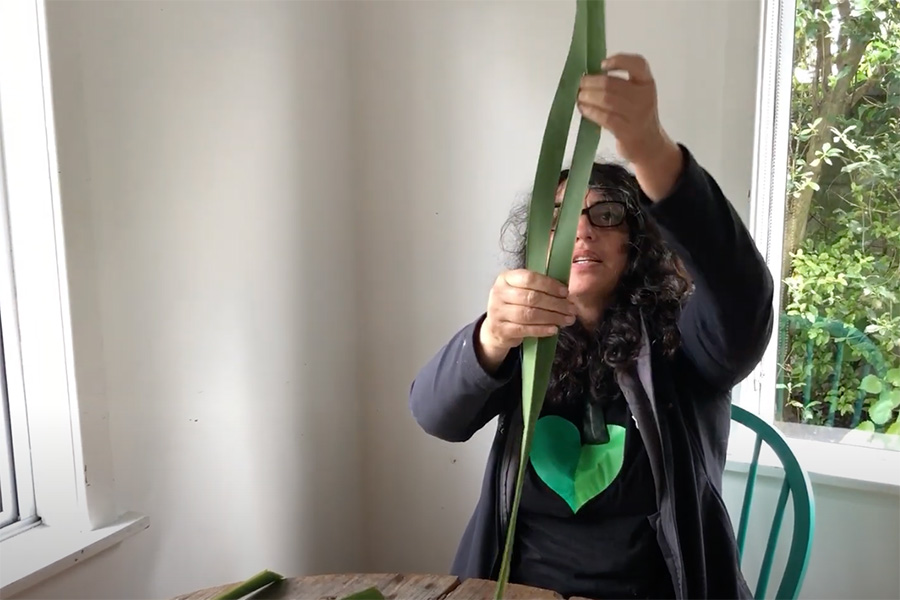
2. Split it in half along the fold, from the top to the hard part of the leaf (the take), which you might find about a third of the way down towards the base. The portion you leave unsplit will become the stem of the putiputi.
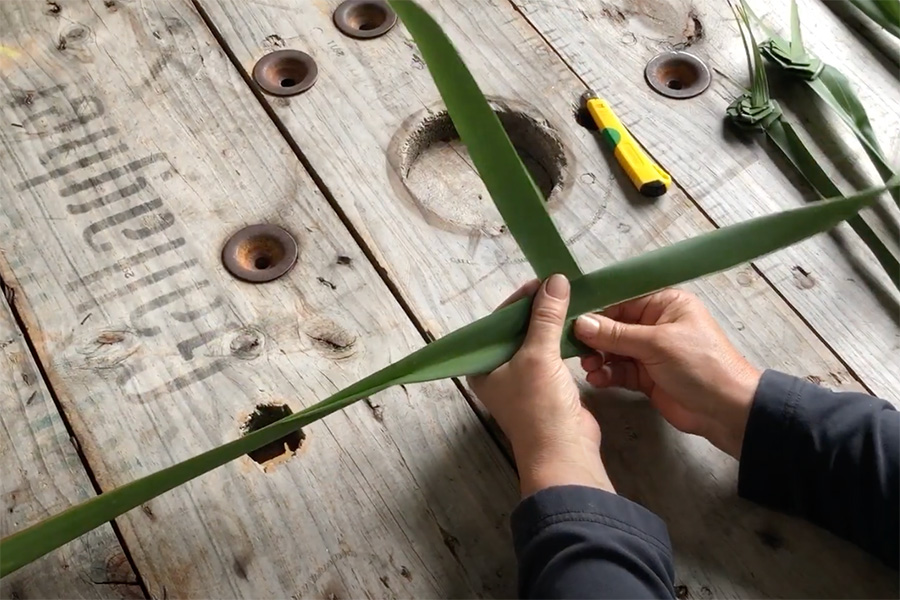
3. Fold the right half of the leaf behind and under the left half.
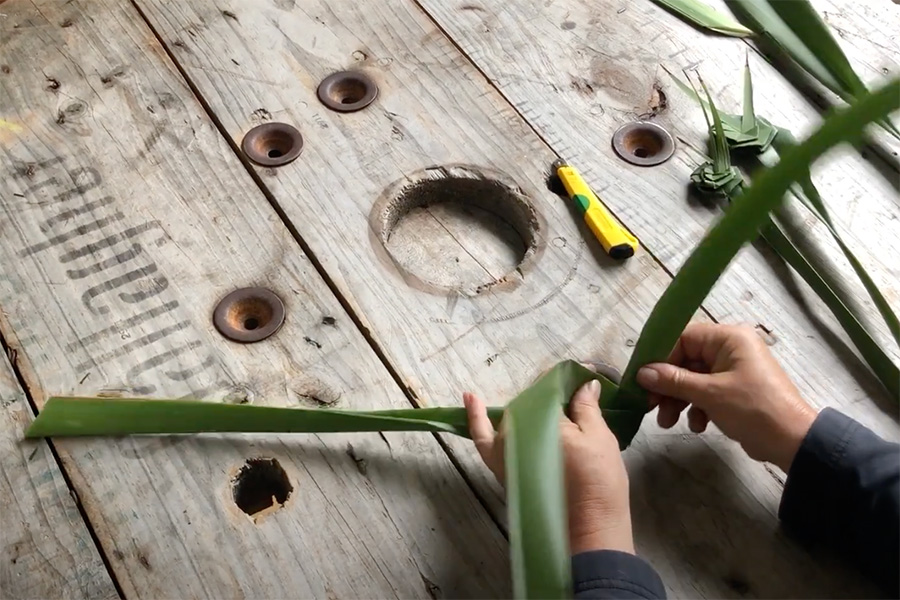
4. Now the left half of the leaf is on the right side – repeat step 3 by folding this section under the section on your left.
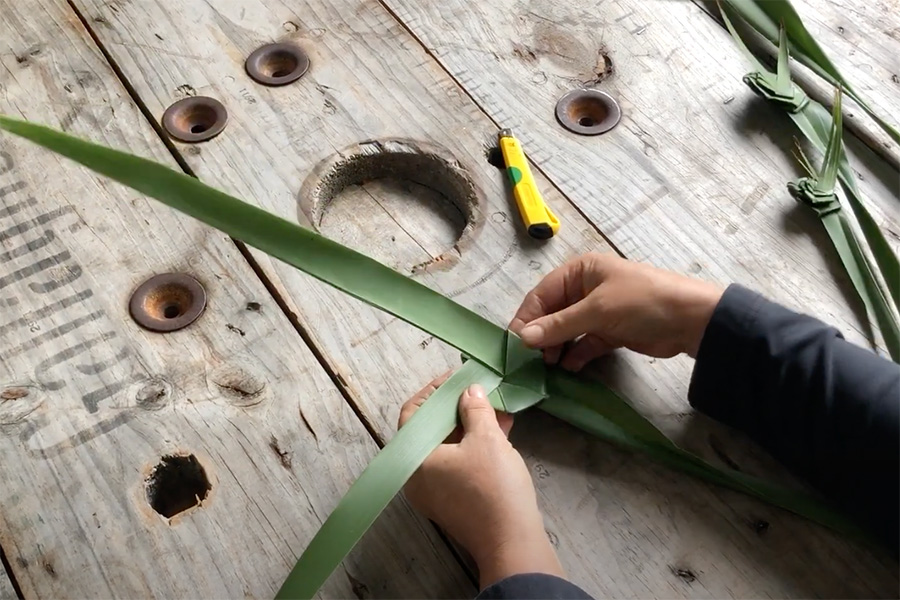
5. Keep rotating and repeating the folding process, and press it down each time so it’s neatly folded.
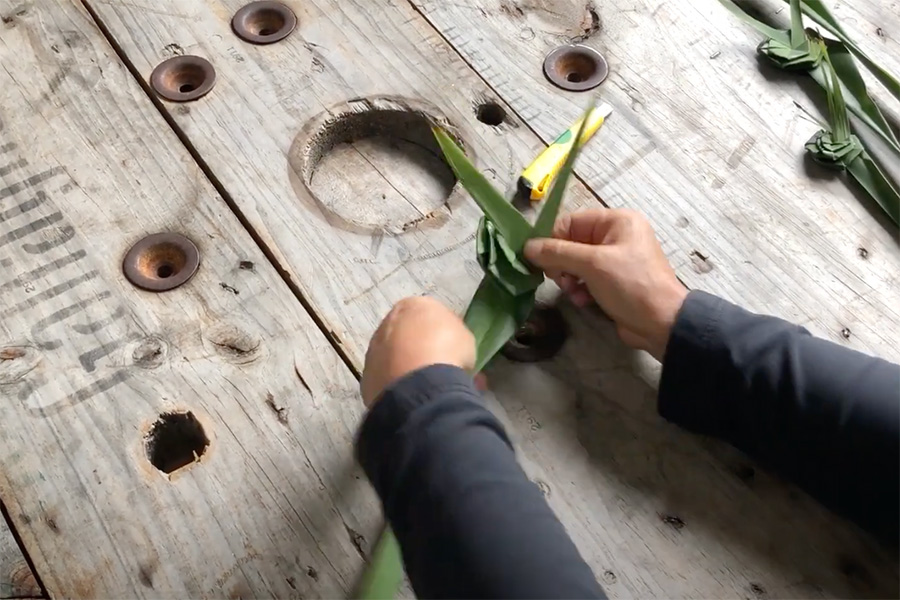
6. Leave about 10cm of both sides of the leaf unfolded near the end.
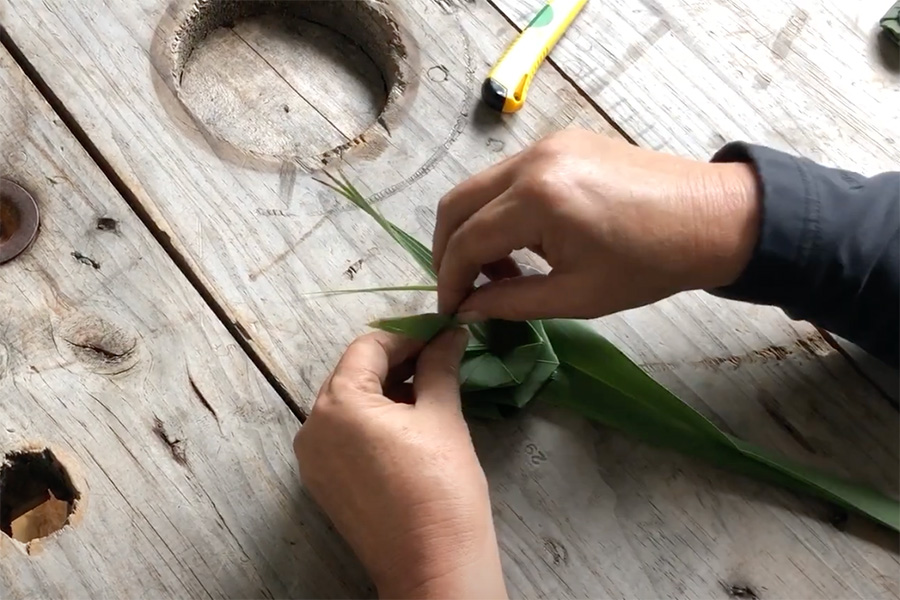
7. Split the ends into thin strips with your thumbnail to make it more decorative, and you’re all done!
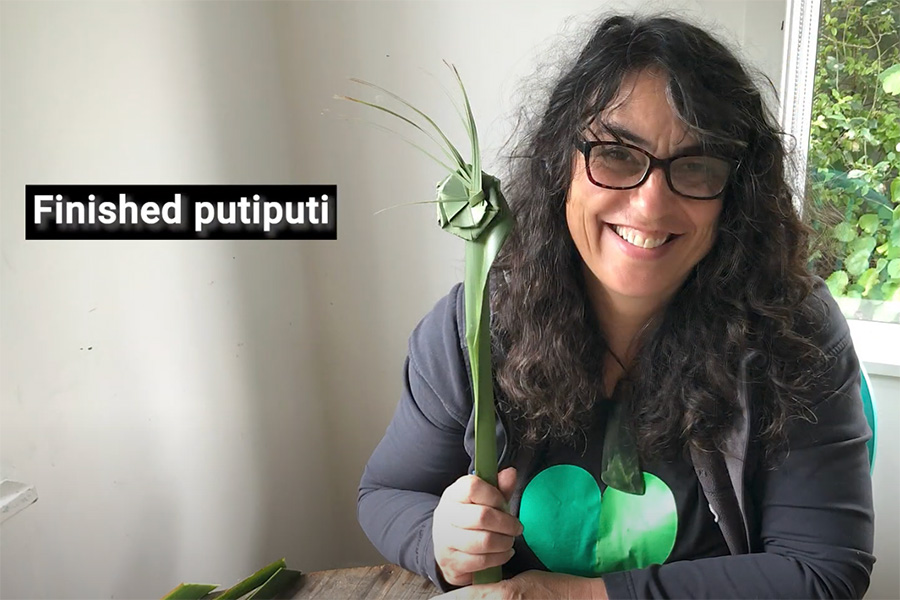
Thank you for following along, and don’t forget to watch and share the video at the top of this post.
Planting harakeke
There are many great reasons to plant harakeke in your garden, kindy or school, and one of the best reasons is that tūī love it!
To order harakeke and other native plants for click and collect from the EcoMatters in New Lynn, Auckland, visit our Native Plant Nursery.



